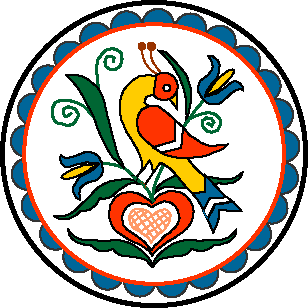
|
Double Trinity Tulips
The stylized tulip with its three petals is a dominate feature in Pennsylvania
Dutch folk art. It is referred to as the Trinity Tulip and it symbolizes the Trinity as
well as faith, hope and charity. The heart in this sign (as well as other Pennsylvania
German folk art) is not the heart of sentimental "Victorian" valentines. Rather,
it is religious in its representation of the heart of God, the source of all love and hope for a future life. The colors in this heart are used to give them
additional meaning. Red symbolizes strong emotion and blue is used to indicate strength,
especially spiritual strength. The white background symbolizes purity and the solid black
circle represents unity in Christ.
|












